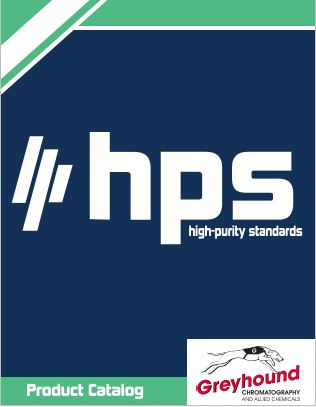The Chemistry behind the Engine
In the 1940s, oil engineers accidently discovered zinc dialkyldithiophosphate or ZDDP. When added to motor oil, it adheres to the surrounding surfaces, protecting them from rust and other normal wear. However, the chemistry behind why ZDDP turns into the tribofilm that coats these engine surfaces has long been kept unknown, until now.
ZDDP in the right environment
Scientists from ExxonMobil and the University of Pennsylvania came together to research the chemistry and physics behind popular oil additives. They published their results in the journal Science.
"ZDDP has been used for more than 70 years," said Nitya Gosvami a research project manager in mechanical engineering department head Robert Carpick's in a statement. "It's one of the most successful antiwear additives we have, but we still don't understand how it works. We do know that everything that happens during sliding is occurring on the first few atomic layers of the surfaces, so we have to use the knowledge we have from nanotechnology and apply it to understand what's going on there."
Aside from knowledge, the scientists wanted to learn more about how ZDDP worked in order to make engines and oils more effective and efficient, getting rid of minor flaws, such as ZDDP's increase of friction in the engine.
The researchers discovered that ZDDP is a smart material that forms under stress or pressure. It's smart because it stops itself from growing larger than the space allows. The pistons create the perfect environment for the film to develop because the pressure changes the amount of energy needed for a chemical reaction to occur, Carpick explained in the statement.
The researchers credited tribochemistry and the nanoscale research approach for finding the answers about how the film forms and why ZDDP has been so effective.
"Nanotechnology's not just for doing cool science," Gosvami said. "You can bring your industrial products into the lab and we can do research on them in a big way. We can get a better understanding of them on the molecular scale."
The chemistry of motor oil
The researchers explained in their paper that they hope to build off this finding and continue the work to develop smarter oils for cars. Currently motor oil is made with a number of naturally occurring and added chemical components.
As Bob Is The Oil Guy explained, oil is made with a slew of chemicals that fit into a short list of chemical categories. For example, organomatalics are used as detergents to neutralize acids that are created through normal engine combustion. Similarly, dispersants are a category of chemicals that help clean out the solid parts of waste from combustion. Esters and partial esters are used to aid lubrication as well as seal conditioners.
Many chemical additives are designed to stop reaction from occurring. Silicone products help prevent foam buildup, while pour point depressants and corrosion inhibitors help stop rust, wear and wax crystals.
There are also huge polymeric molecules that form Viscosity Index Improvers or VII to control the rate at which organic fluids thin when heated, Bob Is The Oil Guy explained.
The types of chemicals used depend on brand, price and purpose among other factors. There are also synthetic motor oils that mimic the affects of organic motor oil and last much longer.
For over 30 years Greyhound Chromatography has been supplying high quality Chromatography consumables to laboratories around the world. Greyhound’s extensive range covers all areas of Environmental, Petrochemical, Food, Forensics, Chemical and Pharmaceutical analysis. Backed by a highly experienced technical services team, Greyhound is the preferred source amongst today’s analysts.
Greyhound Chromatography is pleased to supply Chem Service Certified Reference Standards to Research and Analysis laboratories worldwide.
The benefits of using Chem Service Certified Reference Standards:
- High Quality: High purity chemicals for use as certified reference materials
- Cost Effective: Products packaged in small quantities to minimize expenses
- Wide Selection: 1,200 pesticide and metabolite reference standards (including banned and discontinued items)
- Certification backed with experience: 50 years of experience. ISO 9001:2008 : ISO/IEC 17025:2005 certification :
- ISO Guide 34:2009: For Organic Reference Material
CONTACT US
Tel: +44 (0) 151 649 4000
Email: marketing@greyhoundchrom.com
FOLLOW US
YOU MAY ALSO BE INTERESTED IN OUR NEWSLETTER
About the Author
Susan Massie, Sales & Marketing Director, Greyhound Chromatography and Allied Chemicals Email: sue@greyhoundchrom.com
Susan Massie is the Sales & Marketing Director for Greyhound Chromatography and Allied Chemicals, affectionately known as 'Greyhound' in our scientific community. Greyhound was founded by Susan's husband Paul Massie more than 40 years ago, Susan hasn't been in the business for all of that time but has been involved with Greyhound for over 17 years. Greyhound continues to grow, expanding into new markets and taking on the challenges of our ever changing environment. It's heartwarming to witness the world waking up to the fact that we are damaging our planet on a daily basis. Every action we take has a direct effect on our planet and the world we leave behind for future generations. Susan is passionate about climate change and is happy to work in an industry that can have a direct effect on reducing the impact of our actions on the environment. All of the team at Greyhound take our responsibilities very seriously, the products that we supply are used by the world's leading scientists and chemists as they endeavour to monitor and repair the environment. All is not lost, if we all take responsibility for our actions, from reducing our waste and reusing or recycling our material collateral we can make a difference. The internet is full of useful advice and guidance, Susan is proud to contribute to that wealth of knowledge whenever she can.
Greyhound prides itself on personal service which provides prompt, efficient, cost-effective, safe delivery of all products. Greyhound provides technical advice and distribution of Certified Reference Standards and Materials, Laboratory Consumables, Solvents and Reagents across all scientific disciplines. Greyhound Chromatography offers over 1 Million products from its UK warehouse. The team at Greyhound are proud to support the work of the world's leading scientists and chemists as they challenge the abuse of our planet and try to make a difference to the world we leave behind for our ancestors.
You can view Susan's Linked In Profile here https://www.linkedin.com/in/susan-massie-79ab4121/


















